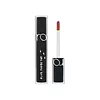What's inside
What's inside
 Key Ingredients
Key Ingredients

 Benefits
Benefits

 Concerns
Concerns

 Ingredients Side-by-side
Ingredients Side-by-side

Dimethicone
EmollientDimethicone Crosspolymer
Emulsion StabilisingTribehenin
EmollientDiisostearyl Malate
EmollientCI 77891
Cosmetic ColorantPolyglyceryl-2 Triisostearate
EmulsifyingVinyl Dimethicone/Methicone Silsesquioxane Crosspolymer
Sorbitan Isostearate
EmulsifyingVp/Hexadecene Copolymer
Cetyl PEG/PPG-10/1 Dimethicone
EmulsifyingParaffin
PerfumingCI 19140
Cosmetic ColorantMica
Cosmetic ColorantCI 77491
Cosmetic ColorantCI 77492
Cosmetic ColorantCI 15850
Cosmetic ColorantPolyglyceryl-2 Diisostearate
EmulsifyingCera Microcristallina
Emulsion StabilisingBenzyl Benzoate
AntimicrobialDehydroacetic Acid
PreservativeCI 42090
Cosmetic ColorantParfum
MaskingTriethoxycaprylylsilane
Anise Alcohol
PerfumingMacadamia Integrifolia Seed Oil
Skin ConditioningPentaerythrityl Tetra-Di-T-Butyl Hydroxyhydrocinnamate
AntioxidantTocopherol
AntioxidantDimethicone, Dimethicone Crosspolymer, Tribehenin, Diisostearyl Malate, CI 77891, Polyglyceryl-2 Triisostearate, Vinyl Dimethicone/Methicone Silsesquioxane Crosspolymer, Sorbitan Isostearate, Vp/Hexadecene Copolymer, Cetyl PEG/PPG-10/1 Dimethicone, Paraffin, CI 19140, Mica, CI 77491, CI 77492, CI 15850, Polyglyceryl-2 Diisostearate, Cera Microcristallina, Benzyl Benzoate, Dehydroacetic Acid, CI 42090, Parfum, Triethoxycaprylylsilane, Anise Alcohol, Macadamia Integrifolia Seed Oil, Pentaerythrityl Tetra-Di-T-Butyl Hydroxyhydrocinnamate, Tocopherol
Dimethicone
EmollientPolyglyceryl-2 Triisostearate
EmulsifyingDimethicone Crosspolymer
Emulsion StabilisingDimethicone/Vinyl Dimethicone Crosspolymer
Skin ConditioningCyclopentasiloxane
EmollientIsododecane
EmollientCyclohexasiloxane
EmollientCI 77499
Cosmetic ColorantCI 15985
Cosmetic Colorant1,2-Hexanediol
Skin ConditioningCI 19140
Cosmetic ColorantCI 15850
Cosmetic ColorantDisteardimonium Hectorite
StabilisingPhenoxyethanol
PreservativePEG-10 Dimethicone
Skin ConditioningTocopheryl Acetate
AntioxidantPropylene Carbonate
SolventBenzyl Benzoate
AntimicrobialParfum
MaskingDimethicone, Polyglyceryl-2 Triisostearate, Dimethicone Crosspolymer, Dimethicone/Vinyl Dimethicone Crosspolymer, Cyclopentasiloxane, Isododecane, Cyclohexasiloxane, CI 77499, CI 15985, 1,2-Hexanediol, CI 19140, CI 15850, Disteardimonium Hectorite, Phenoxyethanol, PEG-10 Dimethicone, Tocopheryl Acetate, Propylene Carbonate, Benzyl Benzoate, Parfum
Ingredients Explained
These ingredients are found in both products.
Ingredients higher up in an ingredient list are typically present in a larger amount.
Benzyl Benzoate is usually created from the condensation of benzoic acid and benzyl alcohol. It is used as a preservative, solvent, and has a floral/balsamic scent in large amounts.
As a preservative, Benzyl Benzoate works against bacteria and fungus. It is often used to treat scabies and lice in medicine.
Solvents are used to keep ingredients together in a product. They can help dissolve ingredients to stable bases or help evenly distribute ingredients throughout the product.
Due to its fragrance, Benzyl Benzoate can be sensitizing and may cause contact dermatitis. It is a known EU allergen. We recommend speaking with a professional if you have any concerns.
Benzyl Benzoate can be naturally found in cranberries and peaches.
Learn more about Benzyl BenzoateCi 15850 is the pigment color red. It is an azo dye and created synthetically.
Azo dyes need to be thoroughly purified before use. This allows them to be more stable and longer-lasting.
This ingredient is common in foundations, lipsticks, and blushes. This color is described as brown/orangey red.
It has many secondary names such as Red 6 and Red 7. According to a manufacturer, Red 6 usually contains aluminum.
Learn more about CI 15850CI 19140 is also known as Tartrazine. Tartrazine is a synthetic dye used in cosmetics, foods, and medicine to add a yellow color.
Tartrazine is created from petroleum and is water-soluble.
Some people may experience allergies from this dye, especially asthmatics and those with an aspirin intolerance.
Learn more about CI 19140Dimethicone is a type of synthetic silicone created from natural materials such as quartz.
What it does:
Dimethicone comes in different viscosities:
Depending on the viscosity, dimethicone has different properties.
Ingredients lists don't always show which type is used, so we recommend reaching out to the brand if you have questions about the viscosity.
This ingredient is unlikely to cause irritation because it does not get absorbed into skin. However, people with silicone allergies should be careful about using this ingredient.
Note: Dimethicone may contribute to pilling. This is because it is not oil or water soluble, so pilling may occur when layered with products. When mixed with heavy oils in a formula, the outcome is also quite greasy.
Learn more about DimethiconeDimethicone Crosspolymer is a silicone created by modifying dimethicone with hydrocarbon side chains. Due to its large size, it does not penetrate skin. It is considered non-occlusive.
Dimethicone Crosspolymer is used to stabilize and thicken products. It also helps give products a silky feel.
Parfum is a catch-all term for an ingredient or more that is used to give a scent to products.
Also called "fragrance", this ingredient can be a blend of hundreds of chemicals or plant oils. This means every product with "fragrance" or "parfum" in the ingredients list is a different mixture.
For instance, Habanolide is a proprietary trade name for a specific aroma chemical. When used as a fragrance ingredient in cosmetics, most aroma chemicals fall under the broad labeling category of “FRAGRANCE” or “PARFUM” according to EU and US regulations.
The term 'parfum' or 'fragrance' is not regulated in many countries. In many cases, it is up to the brand to define this term.
For instance, many brands choose to label themselves as "fragrance-free" because they are not using synthetic fragrances. However, their products may still contain ingredients such as essential oils that are considered a fragrance by INCI standards.
One example is Calendula flower extract. Calendula is an essential oil that still imparts a scent or 'fragrance'.
Depending on the blend, the ingredients in the mixture can cause allergies and sensitivities on the skin. Some ingredients that are known EU allergens include linalool and citronellol.
Parfum can also be used to mask or cover an unpleasant scent.
The bottom line is: not all fragrances/parfum/ingredients are created equally. If you are worried about fragrances, we recommend taking a closer look at an ingredient. And of course, we always recommend speaking with a professional.
Learn more about ParfumThis ingredient is a form of glycerin with emulsifying and emollient properties.
As an emulsifier, this ingredient helps keep products together while adding a thick texture. The manufacturer states this ingredient has emollient properties. Emollients help keep the skin hydrated by trapping moisture in.
Polyglyceryl-2 Triisostearate is created by reacting diglycerin and isostearic acid. Due to the isostearic acid base, it may not be safe for Malassezia or fungal acne.
Learn more about Polyglyceryl-2 Triisostearate